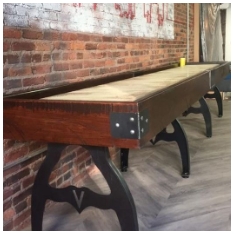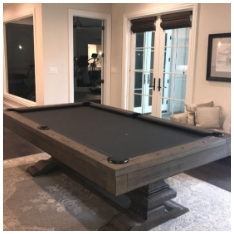When it comes to maintaining a pool table, one of the most crucial decisions you’ll make is choosing the right felt. The type of felt you select can significantly affect gameplay, durability, and overall aesthetics. In this guide, we’ll explore the different types of felt available for pool tables, their pros and cons, and tips on how to choose the best one for your specific needs.
Pool Table Felt
Felt serves as the surface on which the game is played. It provides the necessary friction for the balls to roll and slide smoothly while enhancing the visual appeal of the table. Typically made from wool or a blend of wool and nylon, the felt on pool tables is available in various colors and textures.

Types of Felt for Pool Tables
Wool Felt
Wool felt is a popular choice among pool table owners. Made from 100% wool, it offers excellent durability and a smooth playing surface. Wool felt is also known for its ability to resist wear and tear, making it ideal for tables that see frequent use.
Pros:
- Durable and long-lasting
- Smooth surface for better ball movement
- Available in various colors
Cons:
- More expensive than synthetic options
- Requires more maintenance to keep clean
Blend Felt
Blend felt combines wool with synthetic fibers, often nylon. This type of felt provides a balance between affordability and performance. While it may not offer the same level of durability as 100% wool felt, it still provides a good playing surface for recreational use.
Pros:
- Affordable option
- Good balance of durability and performance
- Easier to clean than wool felt
Cons:
- Less durable than pure wool
- May not perform as well for professional play
Simonis Felt
Simonis is a well-known brand in the pool industry, recognized for producing high-quality felt. Their felt is made from 100% wool and is considered the gold standard for professional players. Simonis felt is designed to provide consistent ball speed and reduced friction, enhancing gameplay.
Pros:
- Top-quality felt used in professional tournaments
- Exceptional durability and performance
- Consistent playing surface
Cons:
- Higher price point
- May not be necessary for casual players
Polyester Felt
Polyester felt is a synthetic option that is often used for budget-friendly pool tables. While it is less durable than wool options, it can still provide a decent playing experience for casual players.
Pros:
- Inexpensive
- Resistant to fading and staining
- Available in various colors
Cons:
- Not as durable as wool felt
- May affect gameplay quality
How to Choose the Best Felt for Your Pool Table
Selecting the right felt for your pool table involves considering several factors, including budget, frequency of use, and personal preferences. Here are some tips to guide you through the decision-making process:
1. Determine Your Budget
Felt prices can vary widely based on the material and brand. Set a budget that reflects your willingness to invest in quality. Remember that higher-priced options like Simonis felt may offer better durability and performance in the long run.
2. Assess Your Usage
Consider how often you use your pool table. If you play frequently or host regular game nights, investing in high-quality wool or Simonis felt may be worthwhile. For occasional players, a blend or polyester felt may suffice.
3. Evaluate Aesthetic Preferences
The color and texture of the felt can significantly impact the overall look of your pool table. Choose a color that complements your room’s decor while ensuring it provides a clear contrast to the balls for improved visibility during play.
4. Think About Maintenance
Different types of felt require varying levels of maintenance. Wool felt, for example, may need more regular cleaning and care than polyester. Consider how much time and effort you’re willing to invest in keeping your pool table looking its best.
Caring for Your Pool Table Felt
Once you've chosen the right felt for your pool table, proper care and maintenance will help extend its lifespan and maintain its appearance. Here are some essential tips:
Regular Cleaning
To keep your felt looking fresh, vacuum it regularly using a soft brush attachment. Avoid using a standard vacuum cleaner, as it may damage the fibers. Additionally, be cautious about spills; clean them immediately with a damp cloth to prevent stains.
Avoid Direct Sunlight
Prolonged exposure to direct sunlight can fade your felt over time. If possible, position your pool table away from windows or use curtains to limit sunlight exposure.
Use a Cover
Investing in a quality cover for your pool table can help protect the felt from dust, spills, and other potential damage when the table is not in use.
Conclusion
Choosing the best felt for your pool table is essential for optimizing your playing experience and maintaining the table's appearance. Whether you opt for 100% wool felt, blend felt, or a more affordable polyester option, understanding the characteristics of each type will help you make an informed decision.
Remember to consider your budget, usage frequency, and aesthetic preferences when making your choice. With proper care and maintenance, your pool table felt can provide years of enjoyment and enhance your gaming experience.





